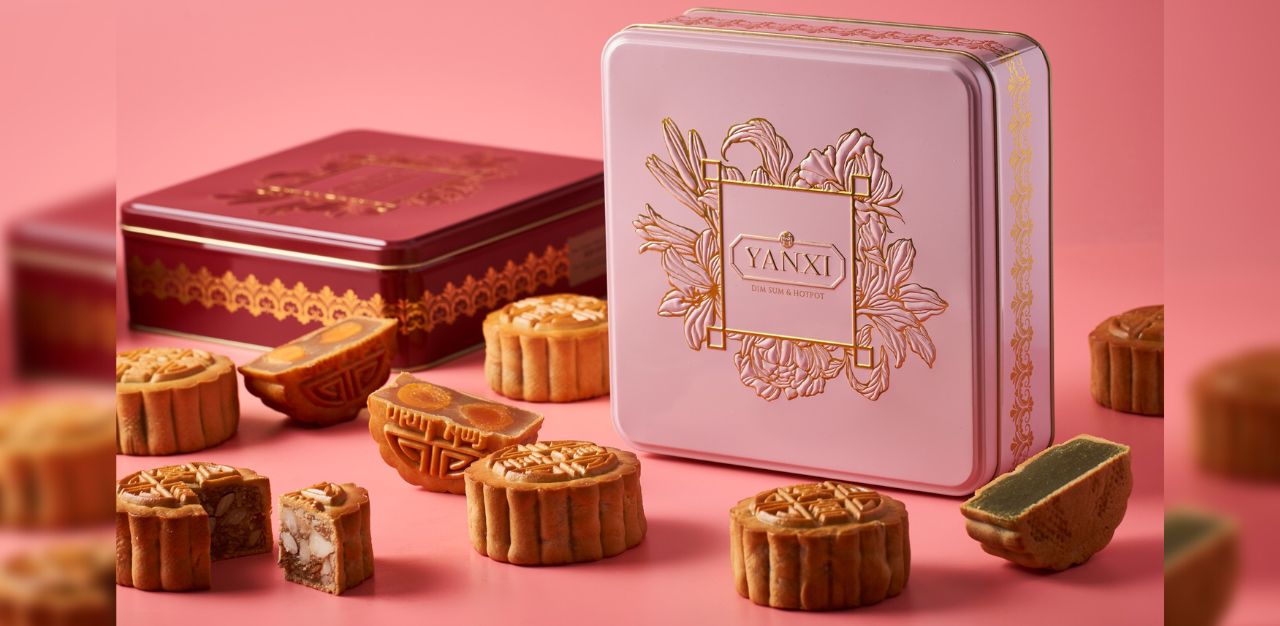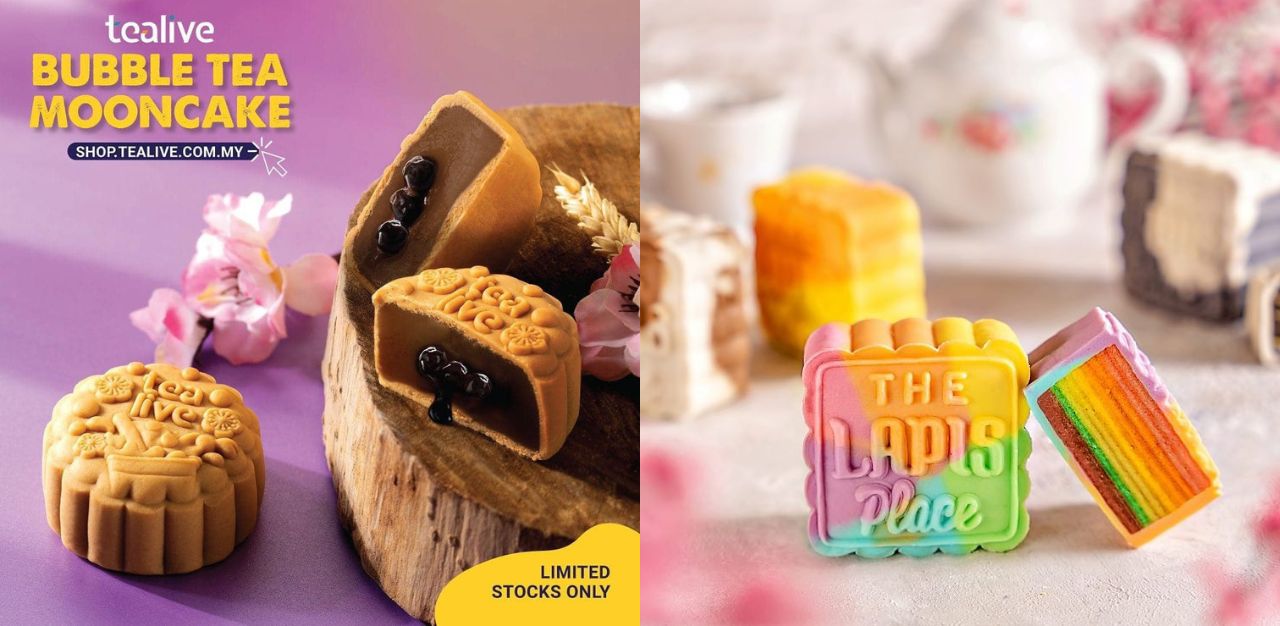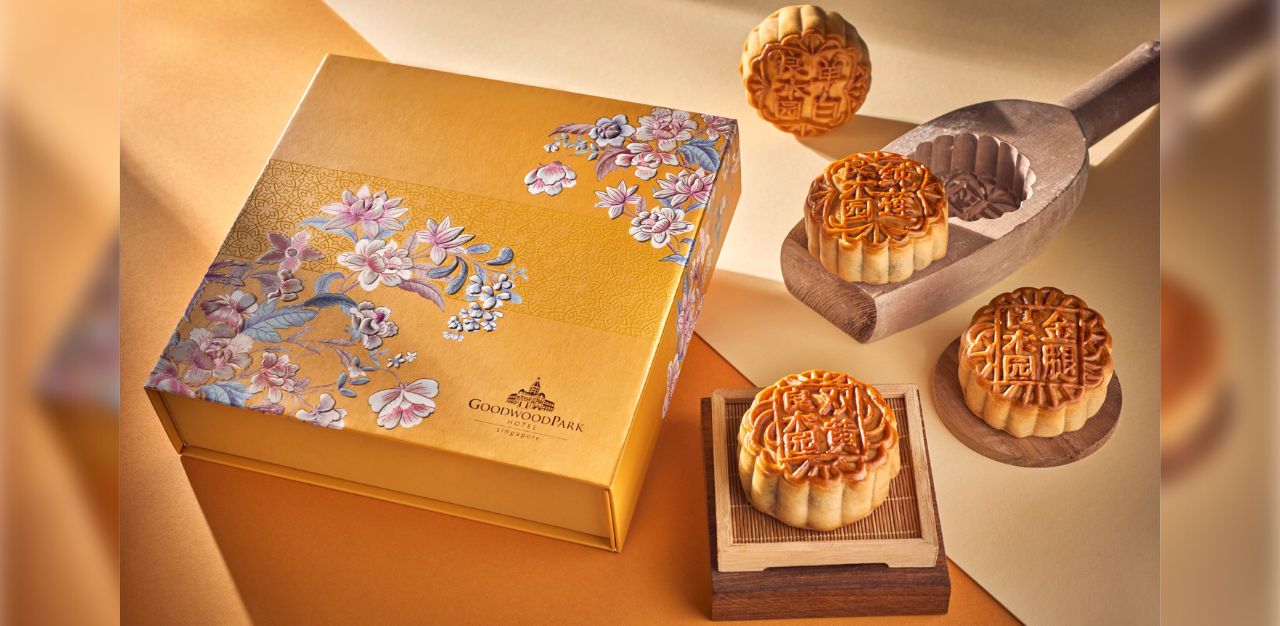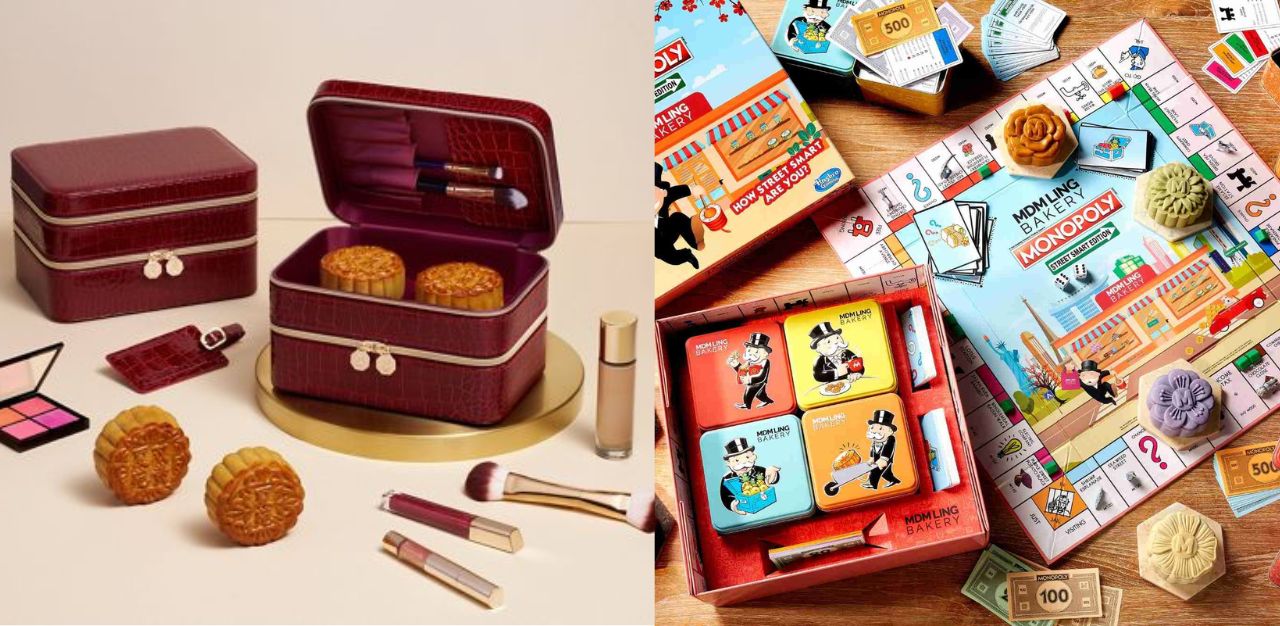Mooncakes are the hallmark food of the Mid-Autumn Festival, a cultural time that is celebrated during the fall harvest. The pastries are eaten during the time when the moon is said to be at its fullest and brightest.
The mooncake is believed to have originated in the Zhou dynasty and is eaten as delicacies and they are given as gifts to family members, friends, neighbours, colleagues and employees, as a traditional gesture.
Today, this traditional pastry has taken on different shapes, ingredients, and preparations as it adapts and evolves with the times. They range from the Teochew variety that is deep-fried with a flaky exterior to the Suzhou variety that is filled with meat.
Some of the more common variations of mooncakes familiar in Singapore have fillings such as kaya and lotus seed paste, and more recently glutinous rice skins, commonly known as ‘snowskin’, with more dessert-like fillings, such as chocolate or champagne truffles have also become a mainstay.
However, those ubiquitous imagery of mooncakes might be changing.
Through the years, Singaporeans have witnessed an evolution of new flavours, packaging, and designs of the traditional mooncake as mooncake makers innovate and compete for the attention of customers and mooncake aficionados.
Flavours of the future
“As mooncakes are a traditional part of the Mid-Autumn Festival, we did not want to be preoccupied with inventing new shapes or fillings. Our classic flavours are an ode to the traditions of Mid-Autumn,” says Group Executive Chef of Yanxi Dim Sum and Hotpot Chef Chan Wai Keung.
Chef Chan says that the restaurant wants to honour the classic.
“We want to stick to what we are known for which includes time-honoured baking techniques and high-quality ingredients, to create an elevated collection of familiar flavours that we know and love,” he says.
Chef Chan adds that for the more health-conscious consumers, many mooncake sellers have now introduced “low-sugar mooncakes” as a healthier option. He adds that these will drive the prices of mooncakes up as healthier ingredients are costlier, which might result in mooncakes being seen as “luxury treats”.

This consumer push towards healthier options is something echoed by the mooncake makers over at Goodwood Park Hotel.
“With the changes in consumer dietary preferences, we may also see an increase in demand for mooncakes with low sugar or low fat, vegetarian or vegan-friendly mooncakes, and even those with plant-based ingredients,” its spokesperson says. Goodwood Park Hotel has been selling mooncakes for a longtime.
For the flavours behind their offerings this year, the spokesperson says that they have ensured a “balanced repertoire of flavours is available”.
“The hotel’s quintessential snowskin mooncakes highlight enticing new flavours like Ondeh Ondeh and Strawberry. But we still have our perennial favourites – D24, ‘Mao Shan Wang’ and Black Thorn Durian. While the hotel’s culinary team strives to create new, innovative and unique mooncake variations every year, we are also mindful that many still prefer the traditional style of mooncakes, especially for gifting purposes. The most popular flavours for gifting are the Baked White Lotus Seed Paste with Double or Single Yolk mooncakes,” she says.

Thinking outside the mooncake box
For some, the boxes these pastries come in are more important than their contents. For a product that is given as gifts during the festivities, box makers and designers pull out all the proverbial stops to please the buyers. Ranging from luxury brands and licensed characters on boxes, to ones that are out to shock and awe the competition, Singaporeans have seen it all. But the mooncake industry has received some flak for what critics call unnecessary and over-the-top packaging.
In a 2019 interview with CNA on the recyclability of mooncake packaging, head of environmental certifications at the Singapore Environment Council (SEC) Liow Chean Siang, said that “about 40 per cent of the packaging is unnecessary and wasteful”.
A 2022 report on sustainable packaging launched by the Singapore Environment Council (SEC), found that the “sustainability of a product’s packaging was a major consideration affecting customers’ purchase decision” and “more than half of respondents cited factors such as the ability to recycle and dispose of the packaging and its environmental footprint” when considering their options.
The same SEC report found that consumers have a “positive attitude” towards adopting sustainable behaviours. According to the report, “ninety-five per cent of respondents indicated that they are inclined to purchase a product that has sustainable packaging” but “more than one in two consumers (53 per cent) will only buy sustainable packaging if it does not cost more, indicating that price is still the top consideration in purchase decisions.”
As consumers become more mindful about the sustainability of packaging, mooncake sellers are adapting to the change. Chef Chan says that the industry is evolving towards generating eco-friendly items that are appealing to consumers.
“Many retailers are now developing distinctive box designs, shifting away from single-use materials and toward more sustainable ones. Many manufacturers strive to produce packaging that can be repurposed, reused, and recycled, from leather chests to rattan handbags,” he says.
“Reusable packaging that is not only pretty but multi-functional, has become increasingly popular with consumers and merchants, and we expect this trend to continue. A good amount of effort is spent by many retailers on the design. Many have already started to introduce packaging which can be repurposed to store other items such as sweets, snacks and even jewellery and trinkets,” says Goodwood spokesperson.
She adds that the oriental designs of its packaging reflects the Mid-Autumn Festival as a Chinese tradition.


The shapes and essence of mooncakes and the Mid-Autumn Festival
“The most defining characteristic of a standard mooncake is its shape. Majority of mooncakes offered in the market are usually round and in Chinese culture, roundness symbolises completeness and togetherness, especially when the mooncakes are shared among family members. The shape also alludes to the actual day of the Mid-Autumn Festival on the 15th day of the eighth Lunar Month when it is a full moon. Mooncakes will also always have a design patterned on its surface for better visual presentation and branding purposes,” says the hotel spokesperson.
Agreeing, Chef Chan says, “Mooncakes should be round – as in Chinese culture, roundness symbolises completeness and togetherness. This also represents the Mid-Autumn full moon, which symbolises prosperity, completeness, family reunion, unity, fulfilment, and perfection. Mooncakes are not just food. It’s a profound cultural tradition.”
“The essence of the Mid-Autumn Festival lies in the celebration of meaningful connections and cherished bonds with friends, family, colleagues and business partners,” the Goodwood spokesperson says.
“Reunion and togetherness are the essence of mooncakes and the Mid-Autumn Festival, where families gather to feast on mooncakes, sip tea, and admire the moon in its full glory,” Chef Chan adds.
Related: Here’s All You Need to Know About the Mid-Autumn Festival in Singapore
Join the conversations on TheHomeGround Asia’s Facebook and Instagram, and get the latest updates via Telegram.














